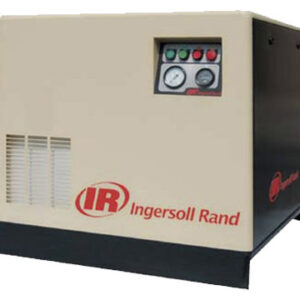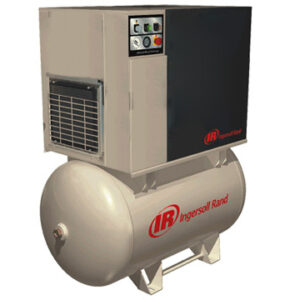Rotary Screw
The Rotary Screw Air Compressor has become a popular source of compressed air for industrial applications. A major reason is its simple compression concept: air enters a sealed chamber where it is trapped between two contra-rotating asymmetrical screws. As these rotors intermesh, they reduce the volume of trapped air and deliver it compressed to the proper pressure level. Combined with continuous contact cooling, the rotary screw air compressor is able to operate with temperatures approximately half of those generated by a typical reciprocating piston compressor. The lower temperature enables the compressor to operate in a “fully loaded” continuous-duty cycle, 24 hours a day, 365 days a year. The ability to run for extended periods of time alone makes the rotary compressor ideal for demanding industrial applications
Today, lubricant-injected Rotary Screw Air Compressors are used in most industrial plant air applications and for large applications in the service industries. They have some advantages over reciprocating compressors, including lower initial installation and maintenance costs; smaller size; reduced vibration and noise; reduced floor space requirements; and the ability to be installed on a level industrial plant floor.
Rotary screw compressors provide continuous flow and do not have the type of pressure pulsations typically associated with reciprocating compressors. Two-stage rotary screw compressors are generally more efficient than single-stage


